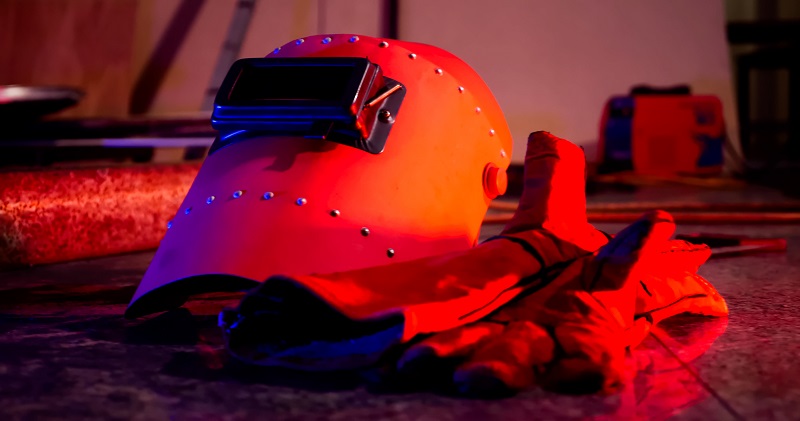Occupational injuries and illnesses can occur in any general industry if employees come into contact with workplace hazards, which can result in serious workplace injuries and be costly for the employer to deal with. It also reduces employee morale and compromises the safety culture of the workforce.
Therefore, OSHA requires personal protective equipment (PPE) be provided with training for staff working with common hazards, such as chemical, radiological, physical, electrical, and mechanical hazards.
Employers must implement a PPE program, which includes:
- hazard assessment,
- personal protective equipment selection,
- personal protective equipment training, and
- program evaluation.
A PPE program up to OSHA standards will ensure occupational safety and reduce the likelihood of getting penalty fines for OSHA violations. Here’s everything you need to know.
What Are My OSHA PPE Requirements as the Employer?
As the employer, you need to facilitate and complete a hazard assessment. This will indicate the appropriate personal protective equipment required to provide occupational safety from the identified hazards.
You are responsible for buying all the necessary PPE for your employees and keeping an inventory at all times. This means the repairing and replacing damaged PPE is also your responsibility, except when a worker has been negligent, such as when they have lost their PPE or damaged it intentionally.
You need to provide training for employees on how to use and care for their PPE and how to assess whether it is fit for use.

What Is a Hazard Assessment?
A hazard assessment aims to identify numerous hazards in the workplace that can lead to injuries and illnesses.
An assessment must be done to identify those hazards so that procedures can be put into place to minimize them – such as allocating appropriate personal protective equipment.
This assessment can be conducted by doing a thorough walkthrough of the workspace. All findings must be documented.
Things that should be assessed include:
- operations,
- equipment,
- work areas,
- storage facilities,
- warehouses,
- offices and
- vehicles.
Workers should be involved in the assessment to provide insight into any hazards they experience while on the job.
Once all the known hazards have been documented, you can analyze the list to determine the appropriate PPE.
How To Select PPE To Ensure Occupational Safety
Any personal protective equipment worn must be selected specifically for each worker’s individual measurements. PPE that doesn’t fit correctly may not provide adequate protection or could be uncomfortable or difficult to wear. This could discourage employees from wearing it, particularly for prolonged periods of time where it is most needed.
Eye and Face Protection
OSHA standards require eye or face protection for workers exposed to hazards from:
- flying particles,
- liquid chemicals or acids,
- poisonous gases, or
- potentially harmful light radiation.
Types of eye and face protection include:
- safety spectacles,
- goggles,
- face shields,
- welding shields, and
- laser safety goggles.

Respiratory Protection
If appropriate for your workplace, an exposure assessment and a hazard control evaluation must be performed to establish the appropriate air-purifying respirators to ensure occupational safety and health.
Types of respirators that meet the OSHA standards of protection include:
- self-contained breathing apparatus (SCBA),
- air-purifying respirators,
- atmosphere-supplying respirators,
- demand respirators,
- escape respirators,
- negative pressure respirators (tight-fitting),
- positive pressure respirators,
- powered air-purifying respirators (PAPR), and
- pressure-demand respirators.
Hearing Protection
Generally, the louder the noise is, the sooner ear protection will be required to minimize exposure and permanent hearing loss.
Permissible Noise Exposures
Duration per day, in hours | Sound level in dB* |
8 | 90 |
6 | 92 |
4 | 95 |
3 | 97 |
2 | 100 |
1.5 | 102 |
1 | 105 |
0.5 | 110 |
<0.25 | 115 |
*Measured on the A scale of a standard sound level meter at slow response.
Different types of ear protection include:
- single-use earplugs,
- pre-formed or molded earplugs, and
- earmuffs.
Head Protection
Hard hats can protect workers from potentially fatal head injuries.
Protection must be worn in any instance when:
- objects might fall from above,
- fixed objects such as exposed pipes or beams are at head height, or
- there could be contact with electrical hazards.
Hard hats all protect against impact and penetration hazards, but their levels of electrical protection vary based on their class:
- Class A - limited voltage protection (maximum 2,200 volts),
- Class B - highest level of voltage shock and burn protection (maximum 20,000 volts),
- Class C - no protection against electrical hazards.
Foot Protection
Protective footwear is required when:
- working with heavy objects that could fall on feet,
- sharp objects on the floor could pierce through ordinary shoes,
- floors are hot or slippery, or
- electrical hazards are present.
Protection includes:
- metatarsal guards,
- toe guards,
- combination foot and shin guards,
- safety shoes,
- electricity conductive shoes, and
- foundry shoes.
Arm and Hand Protection
There are various types of gloves explicitly manufactured to be worn in different hazardous situations in the workplace.
OSHA requires gloves made from:
- leather,
- aluminium,
- aramid fiber,
- synthetic material,
- fabric, or
- coated fabric.
Chemical- and liquid-resistant gloves include:
- butyl gloves,
- natural (latex) rubber gloves,
- neoprene gloves, and
- nitrile gloves.
Body Protection
Full body protection may be required when working with extreme temperatures or hazardous chemicals.
Protective clothing can be made from materials including:
- paper-like fiber,
- treated wool and cotton,
- duck,
- leather,
- rubber or rubberized fabrics,
- neoprene, and
- plastic.
Electrical Protective Equipment
By OSHA standards, any exposed live parts must be de-energized before an employee can work on or near them to ensure occupational safety and health.
Electrical protective equipment includes any rubber insulating material.
Arc rated PPE must provide employees with protection at or more than the shock and arc-rated level. PPE must be worn on the appropriate body part as specified by the manufacturer to be adequately protected.
Face shields must be worn for electrical work with the appropriate arc flash rating. Safety glasses or goggles must be worn beneath face shields.
Personal Fall Protection Systems
Fall protection systems include fall restraint systems and fall arrest systems.
These should be worn to prevent employees:
- from falling off platforms and elevated work stations,
- from falling into holes in the floor,
- when an employee is working over dangerous machinery, and
- from suffering major injuries when a fall does occur.

How Insure Compliance Can Help
At Insure Compliance, we offer training for employees regarding personal protective equipment so that your company can meet the OSHA standards of occupational safety and health.
We train every employee using personal protective equipment to understand:
- At Insure Compliance, we offer training for employees regarding personal protective equipment so that your company can meet the OSHA standards of occupational safety and health. We train every employee using personal protective equipment to understand:
- how to put it on, adjust, wear and take it off correctly,
- the PPE limitations, and
- how to inspect for defaults.
We have a unique Safety Gap Model that we use to assess your company and find any safety gaps. Bridging the safety gaps in your company can reduce OSHA violations and save you money on fees and penalties.
This model identifies your company’s gaps in:
- awareness: knowing the personal protective equipment requirements,
- process: documenting a PPE program,
- knowledge: training employees on PPE,
- verification: performing inspections to ensure employees are using PPE properly, and
- accountability: implementing disciplinary procedures when PPE isn’t used or isn’t used correctly.
Insure Compliance can also assist with performing a hazard analysis, and inspections and evaluations of the PPE program.
Key Takeaways
As the employer, you are responsible to facilitate a hazard assessment to establish the appropriate personal protective equipment (PPE) required to maintain the occupational safety and health of your employees.
Personal protective equipment is divided into different categories:
- eye and face protection,
- respiratory protection,
- hearing protection,
- head protection,
- foot protection,
- arm and hand protection,
- body protection,
- electrical protective equipment, and
- fall protection systems.
You need to select the appropriate PPE that’s the right size for each employee and pay for it.
Then, you need to implement employee training to ensure PEE is understood, worn and maintained correctly.
All of these things need to be detailed in your PPE program, and this must be evaluated and updated regularly.
If you need help bridging the safety gaps in your company, contact Insure Compliance today.
Disclaimer:
Please note that every effort has been made to ensure that the information provided in this guide is accurate. You should note, however, that the information is intended as a guide only, providing an overview of general information available to businesses. This guide is not intended to be an exhaustive source of information and should not be seen to constitute legal, safety or business advice. You should, where necessary, seek your own advice for any issues raised in your affairs.








5 Responses
I’m glad you mentioned the safety of certain materials. I need to get a get an advisor to help me with my warehouse. I want to make sure that we are up to code.
If we can do anything, let me know!
A hard hat is a type of helmet that is primarily used in work environments including construction and industrial sites, to protect the head of the wearer from injuries. These injuries occur when falling objects land on the head of the user, flying objects hit the user’s head; the user falls on their heads onto a dangerous or hard object or even gets electrified. So, do you know how often should hard hats be inspected?
https://oursafetysecurity.com/how-often-should-hard-hats-be-inspected/
It was interesting to me when you pointed out that OSHA standards require workers to use things like welding shields. I would imagine that it would be important for a welding company to ensure that safety regulations are being followed every day. Working with a consulting service seems like the best way to make sure that employees are following the safety standards in the welding industry.